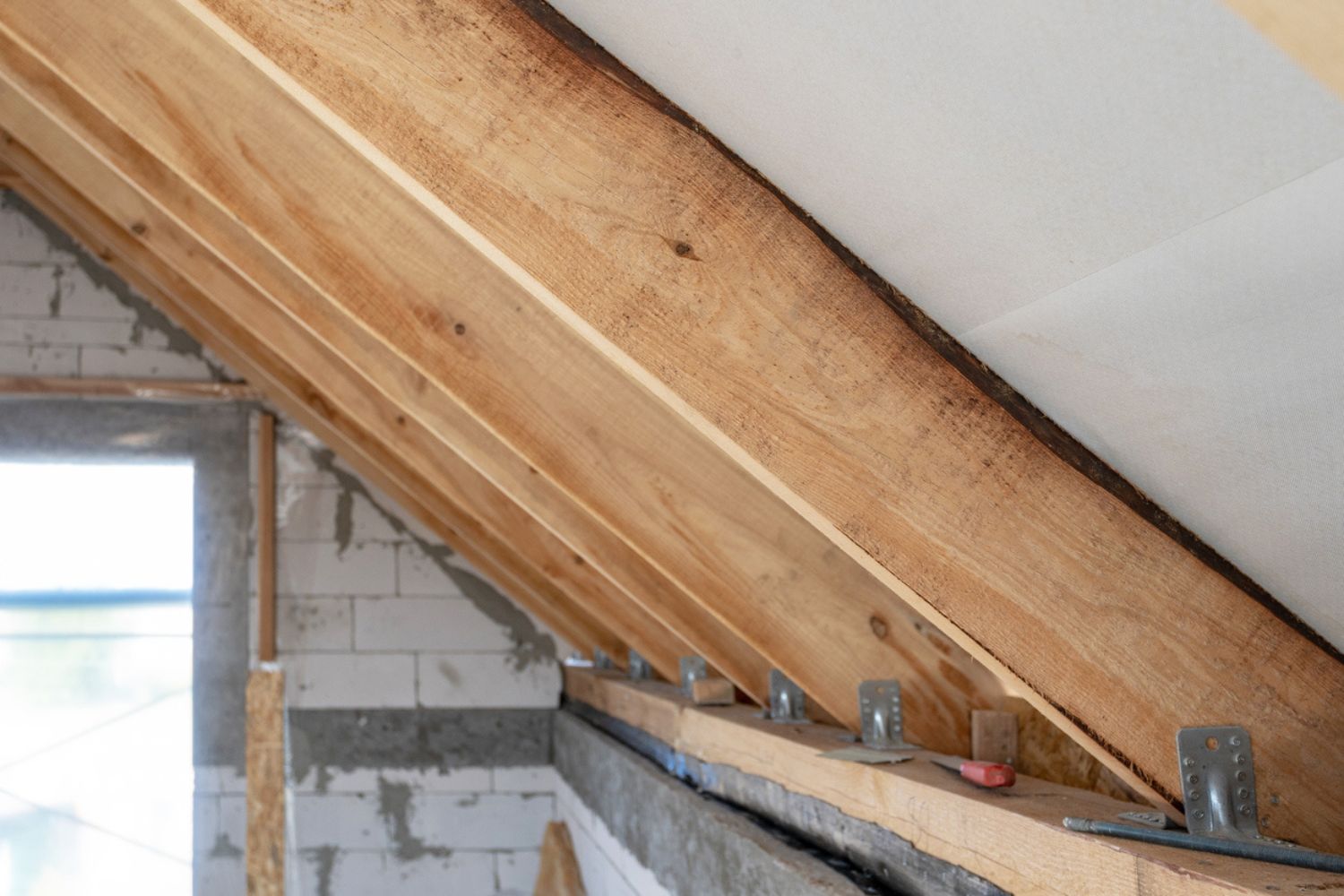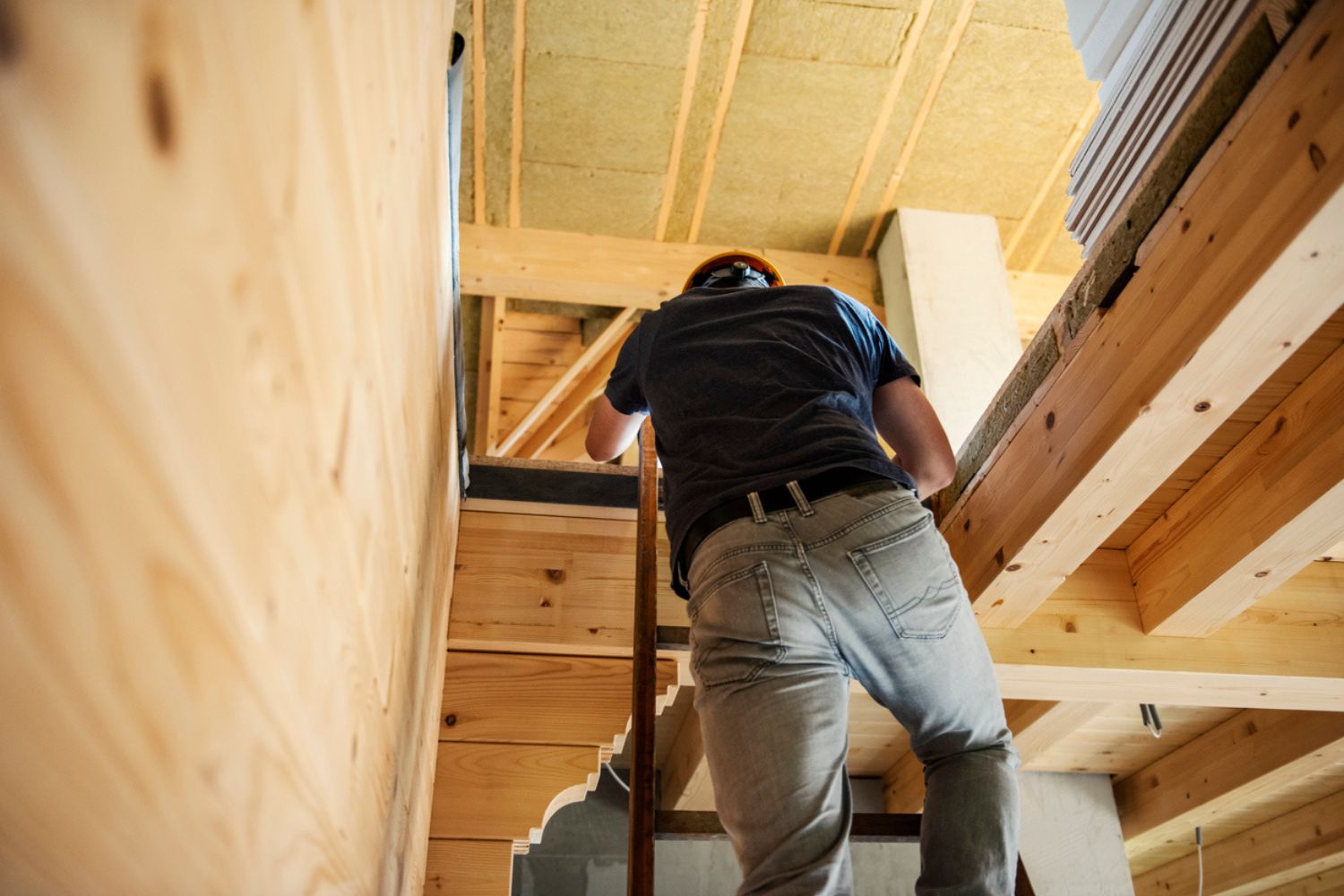We may earn revenue from the products available on this page and participate in affiliate programs. Learn More ›
- National Average: $100
Homeowners in coastal, hilly, or exposed areas of the country know their homes could be at risk for wind-related damage during climate-specific storms. Strong winds can remove roofing and siding or even cause structural damage. A wind mitigation inspection aims to determine whether a home is at risk of wind damage and what steps can be taken to reduce that risk.
Wind mitigation inspection cost averages about $100. During the process, an inspector will check out the home’s roofing system, windows and doors, and more to determine how well these items would hold up in a windstorm. If the inspection finds a home would likely be able to withstand strong winds, some homeowners insurance companies will offer a reduction in policy premiums. This guide will help readers understand more about what is involved in a wind mitigation inspection and questions to ask when hiring an inspector for the task.
What Is a Wind Mitigation Inspection?
A wind mitigation inspection examines a home to determine how it would withstand severe winds. In areas prone to hurricanes or other strong windstorms, a wind mitigation inspection ensures the home is up to code and evaluates how it would perform under such circumstances. Typically, the inspection focuses on exterior elements that could unravel or break free due to heavy gusts of wind. A home that passes a wind mitigation inspection is considered “windproof.”
Wind mitigation inspections are often requested by homeowners insurance companies to determine liability and coverage. While homeowners insurance generally covers roofs and other features of a home that become damaged due to a storm event, the company is able to reduce premiums if these items are in good shape and less likely to be damaged during a storm. A successful hurricane mitigation inspection could translate to savings in homeowners insurance premiums. A homeowner could also request a wind mitigation inspection prior to purchasing a home during a home inspection service to offer peace of mind or to request seller repairs.

Wind Mitigation Inspection vs. 4-Point Inspection
Wind mitigation inspections are often grouped together with standard 4-point inspections (alternatively spelled as “four-point” home inspections) due to an overlapping feature: Both examine the roof of a home. A 4-point home inspection evaluates the condition of the four major systems in a home: roofing, HVAC, electrical, and plumbing. A wind mitigation inspection evaluates how well a home would hold up to strong winds and includes an inspection of the roofing system. A homeowners insurance company may request one or both of these inspections to determine coverage and policy premium amounts.
What Does a Wind Mitigation Inspection Cover?
A wind mitigation inspector will evaluate all of the following items during a routine wind mitigation inspection.
Roof-to-Wall Connection
During a windstorm, it is entirely possible for a roof to become disconnected from the supporting walls if the connection is insufficient. A wind mitigation inspection will examine how the roof and walls of a home are connected by viewing the walls from inside the attic. To resist strong winds, a home requires a continuous load path from the roof to the foundation. Any weak connections interrupt this path and could result in damage to the home. Ideally, the connection will be made with hurricane clips rather than nails.

Age of Roof Covering
A wind mitigation inspector will check out the condition of a home’s roof. If the roof on a home is older or in poor shape, the inspection will be thorough enough to document specific areas that could become an issue during a windstorm. The inspector may recommend the homeowner take on the cost for roof replacement or repair if the roof is in rough shape.
Roof Deck Attachment
The inspector will also view how the roof deck material is attached to the underlying roof trusses. This connection must be secure to avoid the loss of the roof deck during a strong windstorm. The inspector will note the type of connection and the spacing to determine if it is wind-resistant. A roof deck that is poorly attached to a structure could need additional fasteners to pass the inspection.
Secondary Water Resistance
In the event a windstorm does remove shingles from a roof, a secondary water resistance measure should be in place to prevent any water damage to the home. During a wind mitigation inspection, the inspector will check to see if a water barrier is installed between the roof deck and the primary structure for this added layer of protection.
Windows and Doors
All windows and doors will be inspected during this process to check their condition. If windows and doors are deemed too worn or weak for windy conditions, the inspector will suggest a replacement with wind-resistant options. There are plenty of shatterproof, storm-resistant, and hurricane-resistant windows and doors on the market that will stand up to high winds and flying objects during a windstorm. Hurricane windows cost more than regular windows but can make a huge difference for homes in high-risk hurricane and tropical storm areas. Hurricane shutters cost less than windows and are another feasible option for protecting existing windows and doors.

Do I Need a Wind Mitigation Inspection?
Not every home necessarily needs a wind mitigation inspection. Homeowners will want to consider how the following wind damage risk factors affect their home before scheduling one.
Age of Home
Homes built more than 40 years ago run a greater risk of wind damage. As a home ages, building materials wear away and become less secure. A wind mitigation inspection of an older home could help a homeowner determine what upgrades are necessary, like strengthening connections, replacing the roof, or updating windows and doors to wind-resistant products.
History of Windstorms
If a home is located in an area with a history of windstorms, it is a good idea to get a wind mitigation inspection. Homeowners will want to consider the location of their home and any past storms in the area. Homes in coastal areas prone to hurricanes, at high elevations, or in exposed areas with little tree cover are typically at high risk for wind damage.
Previous Wind Damage
Homes previously damaged by wind are subject to wind damage in the future, and not always in the same areas as before. A wind mitigation inspection even after the home has been previously wind-damaged can inform homeowners of other potential at-risk areas.
Homeowners Insurance Discount
Some homeowners insurance providers offer a discount on premiums if a home passes a wind mitigation inspection. A successful inspection informs the insurance company that a home is in good condition and will likely not become damaged due to wind. The decreased liability for the insurance company can translate to “wind mitigation points” that score premium discounts for homeowners. Wind mitigation insurance is ideal for homes in wind-prone areas.

Wind Mitigation Inspection: DIY vs. Hiring a Professional
A wind mitigation inspection must be completed by a trained inspector to be accepted by a homeowners insurance company. The inspector will provide the homeowner or the insurance company directly with an inspection report that details the findings. Without this report and the credentials of the inspector, the insurance company may not accept the results or extend the discounts available for wind mitigation inspections.
While there is no harm in homeowners’ inspecting their home for any problem areas that could become damaged during a windstorm, they’ll want to hire a professional for the actual inspection. A wind mitigation inspector will have the proper training to know the steps and risks involved in the process.
How to Save Money on Wind Mitigation Inspection Cost
Before searching for “wind mitigation inspection near me,” homeowners can review the following tips, which could help them save money on costs associated with the inspection.
- Request pricing from multiple inspectors. In order to compare the cost of services and choose the best value option, it is best to request pricing from at least three different inspectors.
- Research homeowners insurance discounts. After completing a wind mitigation inspection, homeowners will need to submit the proper paperwork to their homeowners insurance provider. If all of the requirements are met, the homeowner could see a reduction in their policy premiums.
- Keep up with regular maintenance. As building materials age and loosen from a home’s exterior, they can become loose and detached during a windstorm. By keeping up with maintenance tasks inside and outside of the home, homeowners reduce the risk of costly wind damage.

Questions to Ask About Wind Mitigation Inspection
While contacting wind mitigation inspectors, homeowners can ask these questions to ensure they have enough information to compare services accurately and choose the best option.
- Are you licensed and insured to complete this inspection?
- How long have you been in business?
- What areas of my home will be inspected during this wind mitigation inspection?
- Will the work be completed by an employee of your business or by a subcontractor?
- How many wind mitigation inspections have you completed?
- How often do you complete wind mitigation inspections?
- Will you provide a written quote and contract?
- How soon can you schedule the inspection?
- How long will the inspection take?
- What does your payment process look like?
- Will you recommend any repairs as part of your inspection?
- Do you send this inspection directly to my homeowners insurance company?
FAQs
Not many homeowners have heard of a wind mitigation inspection. To learn even more about the topic and home inspections in general, they can read through these frequently asked questions.
Q. How do I pass a 4-point home inspection?
Homeowners can pass a four-point inspection by preparing the electrical, HVAC, plumbing, and roofing components of their home for the inspection process. They’ll want to take care of visible wear-and-tear, electrical hazards, air filter replacement, repair water damage, and any other tasks that improve the home’s systems.
Q. What are the stages of a wind mitigation inspection?
The stages of a wind mitigation inspection include the following:
- building code compliance review;
- detailed roof inspection, including roof covering, roof deck attachment, and roof-to-wall connection;
- secondary water resistance inspection;
- window and door inspection.
Q. What is a full home inspection?
A full home inspection is an evaluation of a home’s condition, including the HVAC, plumbing, electrical, water, sewer, roof, and fire safety systems. A home inspection needs to be completed by a trained and qualified home inspector from one of the best home inspection services, with a written report of the findings.
Q. What are the disadvantages of a home inspection?
The disadvantages of a home inspection include the upfront cost of a home inspection, the time it takes to complete the process, and, in the event of a home sale, uncertainty in the negotiations between a buyer and a seller depending on the inspection findings.
Q. What is a 4-point inspection?
Somewhat less involved than a full home inspection, a four-point home inspection evaluates the condition of the four main systems in a home: electrical, HVAC, plumbing, and roofing. Most often, homeowners insurance companies request a four-point inspection to determine liability and coverage.
Q. What should an inspector look for when checking a foundation?
When checking a foundation, an inspector will look for areas that protrude, are uneven, have cracks or holes, or show signs of water damage. Each of these symptoms could indicate a structural issue with the home’s foundation, which could contribute to wind damage during a bad storm.


